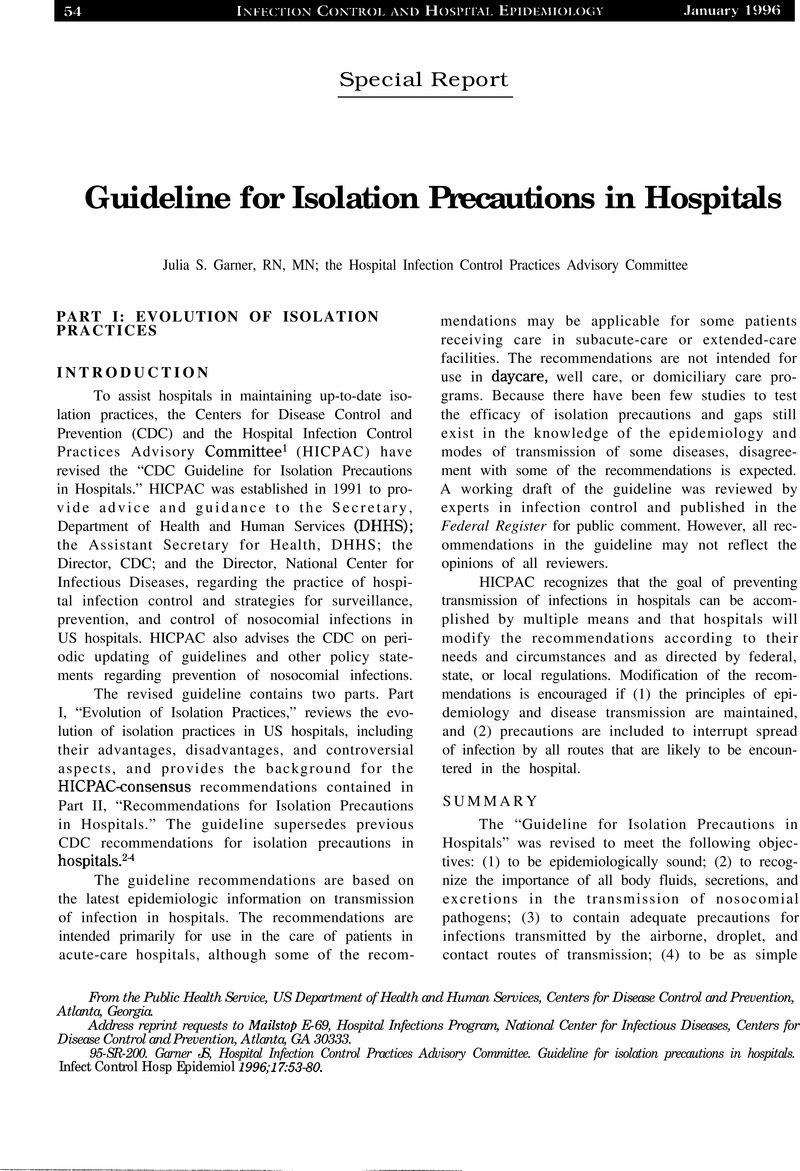Crossref Citations
This article has been cited by the following publications. This list is generated based on data provided by Crossref.
Michael Fink, T
1996.
Rodents, Human Remains, and North American Hantaviruses: Risk Factors and Prevention Measures for Forensic Science Personnel—a Review.
Journal of Forensic Sciences,
Vol. 41,
Issue. 6,
p.
1052.
1996.
Symposium session summaries.
Pediatric Pulmonology,
Vol. 22,
Issue. S13,
p.
78.
Valenti, William M.
and
Herwaldt, Loreen A.
1997.
Product Evaluation.
Infection Control & Hospital Epidemiology,
Vol. 18,
Issue. 10,
p.
722.
Larson, E.
Friedman, C.
Cohran, J.
Treston-Aurand, J.
and
Green, Susan
1997.
Prevalence and correlates of skin damage on the hands of nurses.
Heart & Lung,
Vol. 26,
Issue. 5,
p.
404.
Berlandi, Jackie L. Hamblet
1997.
ETHICAL ISSUES IN PEDIATRIC PERIOPERATIVE NURSING.
Nursing Clinics of North America,
Vol. 32,
Issue. 1,
p.
153.
1997.
Perioperative air safety.
Acta Anaesthesiologica Scandinavica,
Vol. 41,
Issue. s111,
p.
237.
Carlet, J.
1997.
Prise en compte institutionnelle de la multirésistance bactérienne en France.
Réanimation Urgences,
Vol. 6,
Issue. 2,
p.
223.
Gir, Elucir
and
Gessolo, Fabiana
1998.
Conhecimentos sobre AIDS e alterações nas ações profissionais das manicures de Ribeirão Preto.
Revista da Escola de Enfermagem da USP,
Vol. 32,
Issue. 2,
p.
91.
Bradley, John S.
1998.
Antibiotic restriction in the pediatric intensive care unit.
Critical Care Medicine,
Vol. 26,
Issue. 11,
p.
1790.
Gir, Elucir
Costa, Fabiana Prado Potiens
and
Silva, Adriana Maria da
1998.
A enfermagem frente a acidentes de trabalho com material potencialmente contaminado na era do HIV.
Revista da Escola de Enfermagem da USP,
Vol. 32,
Issue. 3,
p.
262.
Harvey, Maurene A.
1998.
Critical-Care–Unit Bedside Design and Furnishing: Impact on Nosocomial Infections.
Infection Control & Hospital Epidemiology,
Vol. 19,
Issue. 8,
p.
597.
Fabio Scano, Lucia Rossi, Annamaria
1999.
Leuconostoc Species: A Case-cluster Hospital Infection.
Scandinavian Journal of Infectious Diseases,
Vol. 31,
Issue. 4,
p.
371.
1999.
Recommended Practices for Cleaning and Processing Anesthesia Equipment.
AORN Journal,
Vol. 70,
Issue. 5,
p.
914.
Kirkland, Kathryn B
and
Weinstein, Jill M
1999.
Adverse effects of contact isolation.
The Lancet,
Vol. 354,
Issue. 9185,
p.
1177.
1999.
Recommended Practices for Standard and Transmission‐based Precautions in the Perioperative Practice Setting.
AORN Journal,
Vol. 69,
Issue. 2,
p.
404.
1999.
Recommended Practices for High‐Level Disinfection.
AORN Journal,
Vol. 69,
Issue. 3,
p.
591.
Calabro, Karen
Bright, Karie
and
Kouzekanani, Kamiar
2000.
Long-term Effectiveness of Infection Control Training among Fourth-year Medical Students.
Medical Education Online,
Vol. 5,
Issue. 1,
p.
5850.
2000.
Recommended Practices for Traffic Patterns in the Perioperative Practice Setting.
AORN Journal,
Vol. 71,
Issue. 2,
p.
394.
Ayliffe, Graham AJ
2000.
Evidence-based Practices in Infection Control.
British Journal of Infection Control,
Vol. 1,
Issue. 4,
p.
5.
Hawley, Robert J.
and
Eitzen, Edward M.
2001.
Biological Weapons—A Primer for Microbiologists.
Applied Biosafety,
Vol. 6,
Issue. 3,
p.
101.



